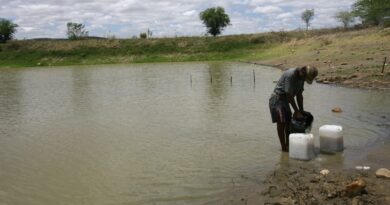Earth Day Special: Microplastics slipping through most wastewater treatment plants

Despite the recent advances in wastewater treatment, tiny plastic particles called microplastics are still not getting completely removed and are slipping through, posing potential health and environmental hazards across the world, a new first-of-its-kind research study has indicated.
Being inexpensive to produce yet lightweight and sturdy, manufacturers have found plastic ideal for use in nearly every consumer good, from food and beverage packaging to clothing and beauty products. The downside is that when a plastic item reaches the end of its useful life, it never truly disappears. Instead, it breaks down into smaller and smaller pieces called microplastics—particles five millimeters or less, about the width of a pencil eraser—that end up in our soil and water.
The research from the US-based University of Texas at Arlington is the first literature review to focus on microplastics, particularly microfibers (MFs) and microbeads (MBs) in the aspects of their source, human toxicity, detection, and analysis in wastewater.
The persistent presence of microplastic (MP) pollution in conventional wastewater treatment plants (WWTPs) is observed worldwide as they are currently not designed to remove MPs effectively. This pollution eventually re-enters and circulate in the environment, elevating the risks posed to ecosystems and organisms through biotoxicity and ecological destabilization, the four authors of the study note.
“What our systematic literature review found is that while most wastewater treatment facilities significantly reduce microplastics loads, complete removal remains unattainable with current technologies,” said Un-Jung Kim, assistant professor of Earth and environmental sciences at UT Arlington and senior author of the study published in Science of the Total Environment.
“As a result, many microplastics are being reintroduced into the environment, likely transporting other residual harmful pollutants in wastewater, such the chemicals Bisphenols, PFAS and antibiotics,” Dr Kim added. “These microplastics and organic pollutants would exist in trace levels, but we can get exposure through simple actions like drinking water, doing laundry or watering plants, leading to potential long-term serious human health impacts such as cardiovascular disease and cancer.”
According to the study, one of the main challenges in detecting and mitigating microplastics is the lack of standardized testing methods. The researchers also call for a unified approach to define what size particle qualifies as a microplastic.
“We found that the effectiveness of treatments varies depending on the technology communities use and how microplastics are measured to calculate the removal rates,” said the study’s lead author, Jenny Kim Nguyen. “One way to better address the growing microplastics issue is to develop standardized testing methods that provide a clearer understanding of the issue.”
Nguyen began this research as an undergraduate student in Kim’s Environmental Chemistry Lab. She is now pursuing a master’s degree in Earth and environmental sciences at UTA, where she is working to develop standardized experimental protocols for studying microplastics in air and water.
“This work helps us understand the current microplastics problem, so we can address its long-term health impacts and establish better mitigation efforts,” said Karthikraj Rajendiran, a co-author of the study and assistant professor of research from UTA’s Bone Muscle Research Center within the College of Nursing and Health Innovations.
The team also emphasizes the need for greater public awareness of microplastics to help consumers make more eco-friendly choices.
“While communities must take steps to improve microplastic detection and screening at the wastewater and water quality monitoring, consumers can already make a difference by choosing to buy clothing and textiles with less plastics whenever feasible, knowing that microfibers are the most common microplastic continually released through wastewater,” Kim added.



